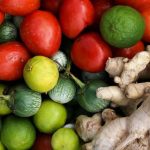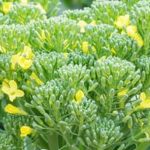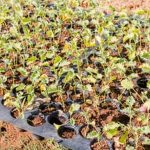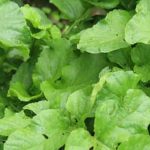Are you eager to get your hands dirty and start planting in the Pacific Northwest? The Pacific Northwest vegetable gardening calendar is a valuable tool for anyone looking to cultivate their own produce in this region. From choosing the right vegetables to dealing with common pests and diseases, this comprehensive guide will help you make the most of your gardening experience.
The Pacific Northwest is known for its mild, wet climate, which creates unique challenges and opportunities for gardeners. Understanding the local climate and growing season is crucial for successful vegetable gardening in this region. With the right knowledge, you can make informed decisions about which vegetables to plant and when to plant them.
In addition to the climate, selecting the right vegetables is essential for a successful garden. Some vegetables thrive in the cool, damp weather of the Pacific Northwest, while others may struggle. By carefully choosing your crops, you can maximize your yield and enjoy a bountiful harvest. With proper soil preparation and attention to detail, you can create a thriving vegetable garden that will provide fresh produce throughout the growing season.
Climate and Growing Season in the Pacific Northwest
The Pacific Northwest is known for its unique climate and growing season, which can vary drastically from other regions. The climate in the Pacific Northwest is characterized by mild, wet winters and warm, dry summers. This temperate maritime climate provides ideal conditions for growing a wide variety of vegetables throughout the year.
In the Pacific Northwest, the growing season typically starts in early spring, around March or April, and continues through late fall, around October or November. However, this can vary depending on the specific microclimate of your location within the region. Coastal areas tend to have milder temperatures and a longer growing season compared to inland areas.
When planning your vegetable garden in the Pacific Northwest, it’s important to consider the average last frost date in your area. This will help you determine when it’s safe to start planting tender crops such as tomatoes and peppers. In general, coastal regions have earlier last frost dates than inland areas.
Additionally, the Pacific Northwest is known for its mild summers with relatively low temperatures compared to other parts of the country. While this may pose challenges for heat-loving plants like okra and melons, it creates excellent conditions for cool-season crops such as lettuce, broccoli, and peas. Understanding the unique climate and growing season of the Pacific Northwest is essential for successful vegetable gardening in this region.
| Month | Vegetable |
|---|---|
| April | Carrots |
| May | Tomatoes |
| June | Zucchini |
Choosing the Right Vegetables for the Pacific Northwest
When it comes to vegetable gardening in the Pacific Northwest, choosing the right vegetables to cultivate is essential for a successful yield. The region’s unique climate and growing season can affect the types of vegetables that thrive in this area. To ensure a bountiful harvest, it’s important to select vegetables that are well-suited for the Pacific Northwest.
Below are some recommended vegetables to consider for your Pacific Northwest vegetable garden:
- Broccoli: Broccoli is a cool-season vegetable that does well in the Pacific Northwest’s moderate climate.
- Carrots: Carrots are ideal for the Pacific Northwest as they prefer cooler temperatures and can be planted early in the season.
- Kale: Kale is a hardy green that thrives in the PNW’s mild climate and can even withstand light frost.
- Tomatoes: While tomatoes require warm temperatures to thrive, there are specific varieties such as “Siletz” and “Oregon Spring” that are well-suited for the shorter growing season in the PNW.
In addition to these suggestions, there are many other vegetables that can be successfully grown in the Pacific Northwest. It’s important to consider factors such as temperature, sunlight, and soil conditions when selecting which vegetables to plant in your garden. By choosing vegetables that align with the PNW climate and growing season, you’ll set yourself up for a successful and productive harvest.
For further guidance on selecting the right vegetables for your Pacific Northwest garden, consider consulting local gardening resources or connecting with experienced gardeners in your community who can provide valuable insights specific to this region. With careful planning and consideration, you can create a diverse and flourishing vegetable garden tailored to the unique conditions of the Pacific Northwest.
Preparing the Soil for Vegetable Gardening
When it comes to preparing the soil for vegetable gardening in the Pacific Northwest, there are a few key steps to take in order to ensure a successful growing season. First and foremost, it’s important to test the pH level of your soil.
Most vegetables prefer a slightly acidic soil with a pH level between 6.0 and 6.8. If your soil is not within this range, you may need to add amendments such as lime or elemental sulfur to adjust the pH accordingly.
In addition to testing and adjusting the pH level, it’s also crucial to add organic matter to your soil. Whether it be compost, manure, or other organic materials, adding these substances will improve the texture and fertility of the soil, leading to healthier and more productive plants. Before planting, be sure to thoroughly mix the organic matter into the top few inches of soil.
Finally, consider mulching your vegetable garden beds. Mulch helps retain moisture in the soil, suppresses weed growth, and regulates the temperature of the soil. Organic materials such as straw, wood chips, or shredded leaves make excellent mulch for vegetable gardens.
By following these steps to prepare your soil for vegetable gardening in the Pacific Northwest, you’ll be well on your way to creating an optimal environment for your plants to thrive.
| Soil Preparation Step | Details |
|---|---|
| Test Soil pH | Most vegetables prefer slightly acidic soil (pH 6.0-6.8). Adjust pH if necessary with lime or sulfur. |
| Add Organic Matter | Mix compost, manure or other organic materials into the top few inches of soil. |
| Mulch Garden Beds | Use organic mulch such as straw or wood chips to retain moisture and suppress weeds. |
Planting Schedule for Different Vegetables in the Pacific Northwest
In the Pacific Northwest, the climate and growing season play a significant role in determining the planting schedule for different vegetables. The region experiences mild, wet winters and dry, warm summers, which can be challenging for some crops. It is essential to understand the specific needs of each vegetable to ensure a successful harvest.
When planning your vegetable garden in the Pacific Northwest, it’s important to consider the last frost date in your area. This will help you determine when it is safe to plant certain vegetables outdoors. For example, hardy cool-season crops like lettuce, peas, and spinach can be planted as early as late winter or early spring, while warm-season crops like tomatoes, peppers, and squash should be planted after the last frost date to avoid damage from cold temperatures.
Furthermore, it’s crucial to pay attention to the days to maturity for each vegetable variety. This will help you stagger your planting to ensure a continuous harvest throughout the growing season. For example, if you want a continuous supply of carrots, you can sow seeds every few weeks from early spring until midsummer.
Using a Pacific Northwest vegetable gardening calendar can also be helpful in planning your planting schedule. These calendars provide specific dates for planting different vegetables based on local climate and growing conditions. By following a recommended planting schedule, you can maximize your chances of success in growing a variety of vegetables in the Pacific Northwest.
Tips for Maintaining and Caring for Vegetable Gardens in the Pacific Northwest
When it comes to maintaining and caring for vegetable gardens in the Pacific Northwest, there are several important tips to keep in mind. The climate in this region can be challenging at times, so proper care is essential for a successful harvest. Here are some helpful tips for maintaining your vegetable garden in the Pacific Northwest:
- Watering: In the Pacific Northwest, it’s important to water your vegetable garden regularly, especially during the dry summer months. Be mindful of rainfall patterns and adjust your watering schedule accordingly to ensure that your plants receive an adequate amount of moisture.
- Weeding: Regular weeding is crucial for maintaining a healthy vegetable garden. Weeds can easily take over and compete with your vegetables for nutrients, sunlight, and water. Be sure to regularly remove any unwanted plants from your garden beds.
- Fertilizing: Proper fertilization is key to ensuring that your vegetables receive the nutrients they need to thrive. Consider using organic fertilizers or compost to feed your plants throughout the growing season.
Additionally, it’s important to stay vigilant against common pests and diseases that can affect vegetable gardens in the Pacific Northwest. Keep an eye out for signs of infestation or illness, and take proactive measures to address any issues that may arise.
Ultimately, by following these tips and staying attentive to the needs of your vegetable garden, you can enjoy a bountiful harvest of fresh produce in the Pacific Northwest.
For more detailed information on maintaining and caring for vegetable gardens specific to the Pacific Northwest region, be sure to consult local gardening resources or organizations. These sources can provide valuable insight tailored to the unique climate and conditions of this area.
Dealing With Common Pests and Diseases in Pacific Northwest Vegetable Gardens
One of the challenges that Pacific Northwest vegetable gardeners face is the presence of common pests and diseases that can affect their crops. Some of the most common pests in this region include aphids, slugs, and caterpillars, while diseases such as powdery mildew and blight can also pose a threat to vegetable plants. It is important for gardeners to be vigilant and take steps to prevent and manage these issues in order to ensure a successful harvest.
To deal with common pests in Pacific Northwest vegetable gardens, it is important to start by implementing preventative measures. This can include using row covers to protect plants from pests, practicing crop rotation to reduce pest populations, and promoting biodiversity in the garden to attract natural predators of garden pests. Additionally, using organic pest control methods such as neem oil or insecticidal soap can help keep pest populations in check without harming beneficial insects.
In addition to pests, diseases can also impact vegetable plants in the Pacific Northwest. To prevent the spread of disease in the garden, it is essential to practice good sanitation by removing any diseased plant material and properly disposing of it.
It is also important to choose disease-resistant varieties when possible and provide adequate spacing between plants to promote air circulation. By staying proactive and addressing any signs of pest infestations or disease early on, gardeners can minimize their impact on vegetable crops in the Pacific Northwest.
Overall, while dealing with common pests and diseases can be a challenge for Pacific Northwest vegetable gardeners, implementing preventative measures and staying vigilant can help maintain healthy crops throughout the growing season. By understanding the specific pest and disease pressures in this region and taking appropriate action, gardeners can enjoy a bountiful harvest of fresh vegetables from their own backyard.
Harvesting and Preserving Vegetables in the Pacific Northwest
Once your vegetables have been planted and cared for, the time will come to harvest and preserve your bountiful produce in the Pacific Northwest. Proper harvesting and preserving techniques are essential to enjoying the fruits of your labor all year round.
Harvesting Vegetables
The key to harvesting vegetables is to pick them at the peak of freshness. This means paying close attention to their size, color, and texture. For example, tomatoes should be fully colored and slightly soft when lightly squeezed, while root vegetables like carrots and potatoes should be harvested when they have reached a good size but before they become woody or overgrown.
Preserving Techniques
There are several methods for preserving vegetables such as canning, freezing, and pickling. Canning is a popular method for preserving high-acid foods like tomatoes and pickles, while freezing works well for many types of vegetables including peas, corn, and green beans. Pickling is an excellent way to preserve cucumbers, peppers, and other firm vegetables. Additionally, drying herbs from your garden is a great way to preserve their flavor for use in cooking throughout the year.
Storing Your Harvest
After harvesting and preserving, it’s important to store your bounty properly. Some vegetables like onions, garlic, and winter squash prefer cool dark storage areas with good ventilation. Others may need specific conditions such as refrigeration or freezing. Be sure to research the best way to store each type of vegetable in order to maximize its shelf life and maintain optimal flavor.
Resources for Further Information on Pacific Northwest Vegetable Gardening Calendar
In conclusion, gardening in the Pacific Northwest can be a rewarding and fruitful experience, as long as you understand the unique climate and growing season of the region. By choosing the right vegetables, preparing the soil properly, and following a planting schedule tailored to the specific needs of each crop, you can maximize your chances of success.
Additionally, by taking proactive measures to care for your garden and protect it from common pests and diseases, you can ensure a bountiful harvest.
As you embark on your Pacific Northwest vegetable gardening journey, it’s important to seek out reliable resources for further information. Whether you’re a novice or seasoned gardener, there are always new techniques and tips to learn that can enhance your gardening experience. Utilize reputable books, online guides, local gardening clubs or extension services to stay informed about the best practices for success in your Pacific Northwest vegetable garden.
Ultimately, with dedication and a willingness to adapt to the unique conditions of the Pacific Northwest, you can enjoy an abundance of fresh, homegrown produce throughout the growing season. The pacific northwest vegetable gardening calendar is designed to help guide you through every step of the process so that you can make the most of your gardening efforts and enjoy a rich harvest year after year. Happy gardening.
Frequently Asked Questions
What Vegetables Grow Best in the Pacific Northwest?
The Pacific Northwest has a favorable climate for growing a variety of vegetables, including carrots, beets, kale, lettuce, and spinach. These cool-season crops thrive in the region’s mild and wet conditions.
What Is the Growing Season in the Pacific Northwest?
The growing season in the Pacific Northwest typically runs from late March to early October. However, some areas may experience shorter or longer growing seasons due to variations in climate and elevation.
When Should You Plant Vegetables in Washington State?
In Washington State, the best time to plant vegetables varies depending on the specific crop and local climate conditions. Generally, many vegetables can be planted in late winter or early spring for a summer harvest, while others are best planted in late summer for a fall harvest.
It’s important to consult planting guides tailored to the region for more specific timing recommendations.

If you’re looking to get into vegetable gardening, or are just looking for some tips on how to make your current garden better, then you’ve come to the right place! My name is Ethel and I have been gardening for years. In this blog, I’m going to share with you some of my best tips on how to create a successful vegetable garden.





